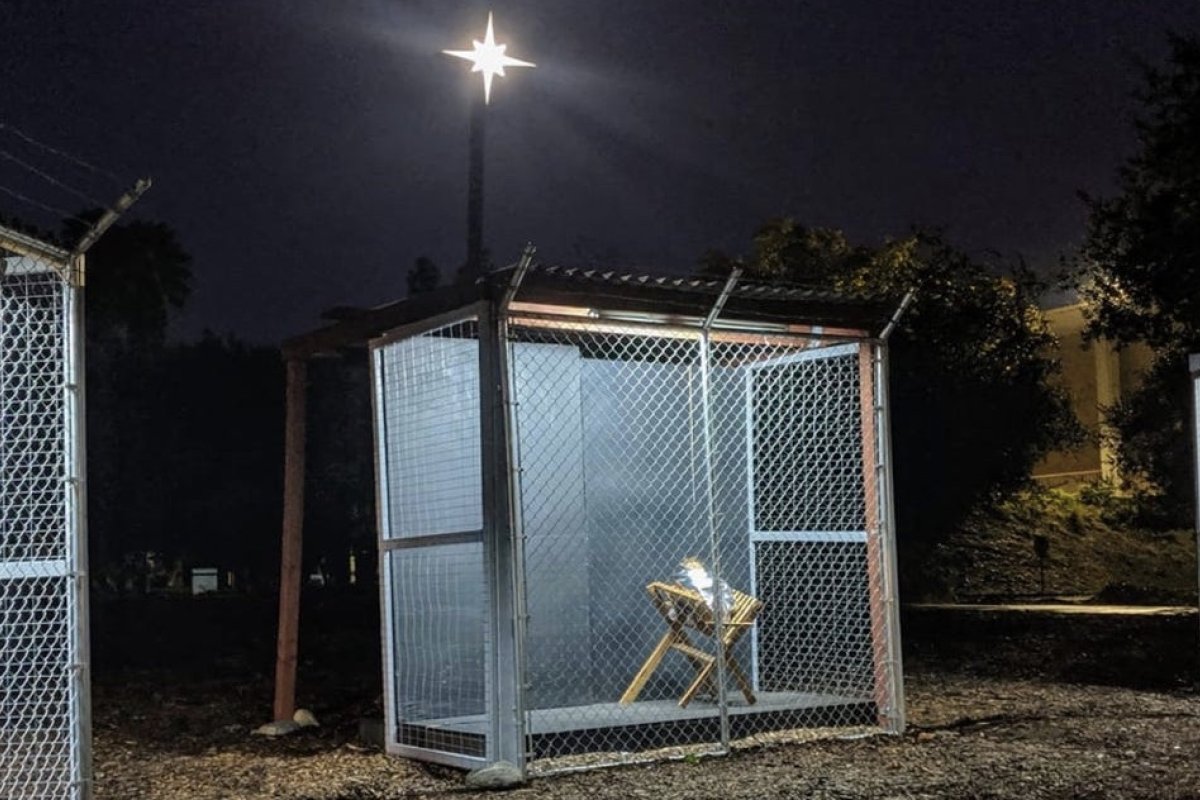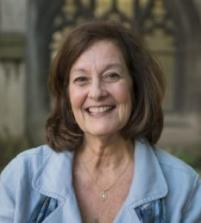
Disruptive Religion
Why we sometimes need religion to offend us and disturb the status quo
By Cynthia G. LindnerJanuary 2, 2020
Earlier last month, as the Christian season of Advent began and images of the Holy Family emerged on church lawns around the U.S., multiple media outlets drew our collective attention to the nativity scene outside Claremont United Methodist Church, near Los Angeles. Instead of the traditional tableau featuring the infant Jesus lying in a manger with parents Mary and Joseph looking on in love and wonder, the Claremont congregation portrayed the Holy Family as border detainees, separated from one another in chain-link cages topped with barbed wire. The disruption of such a beloved image aroused lively response across the spectrum: Karen Clark Ristine, the church’s pastor, reports that her Facebook account, to which she had posted pictures of the tableau, received over 15,000 “shares” and 4,000 comments in one day. Many voiced strong support of the church’s advocacy for the human rights of immigrants and refugees, while others criticized the congregation for “bringing politics into the church.”
The news sources themselves ran the gamut from The Washington Post to Fox News and a variety of local sources in between. Surprisingly, given the normally stark differences among those outlets’ customary political identifications, several reports acknowledged that the “nontraditional” Claremont nativity stood squarely within a tradition of creche-as-protest. Some recalled similar scenes portraying a caged holy family in churchyards from Oklahoma and Indiana to Massachusetts during the 2018 Christmas season (#holyfamilyseparated). Others remembered earlier nativity protests against gun violence or the Vietnam War. America magazine quoted Felicity Harley-McGowan, a Yale University lecturer, who observed that nativities have been a means “to articulate contemporary concerns” for centuries. The Washington Post linked the tableau’s inclination towards social commentary to the originator of the form itself, St. Francis of Assisi, who created these public displays to better communicate the meaning of Christmas to thirteenth-century Christians—most especially to those dispossessed by the celebrations of the powerful and wealthy. From their very origins, it seems, these public representations of God breaking into our world were intended to raise challenging questions about who controls these narratives of divine-human relationship, and what the stories’ claim on our life together might be.
There is something destabilizing, it seems, in these material reminders of a savior’s stable birth. This intimate collision of human and holy, occurring in spaces open to the public gaze, represents a fundamental disruption of the categories, venues, and identities by which human societies demarcate and distribute power, worth, and value. Religious claims of conscience—especially those that disturb the safety or predictability of the status quo—have always made societies anxious. In our own context, there has been litigation opposing manger scenes and menorahs in our public squares and domes atop our suburban mosques, silencing the steeple bells and voices of muezzins that would remind us of any obligation beyond those of nation or economy. While these and other measures to control religious expression and practice may seem to be simply the reasonable accommodations of an increasingly pluralistic culture, the concurrent caging of our contemporary moral imagination has sapped our ethical will and crippled our civil discourse, and with devastating consequences for our life together as a society and for the future of the political and naturals ecosystems on which we depend.
A recent issue of The Atlantic magazine, “How to Stop a Civil War“ (December 2019), offered a powerful collection of articles, essays, and opinions exploring the declining health of the U.S. body politic from a variety of angles. Historians, political philosophers, marriage therapists, parents, playwrights, and poets analyzed what might be ailing our democracy: most focused on the factionalism and fearfulness resulting from rapid and inevitable demographic change and the unbridled growth of social media. Authors offered a wide range of solutions to our national malaise, from rewarding our children for acts of kindness instead of reinforcing metrics of “success,” to relearning the art of listening and reclaiming the practices of moral discernment, to reviving our communal imagination by telling true stories through the arts, all as a means of renewing our national commitment to unity. Religion per se was not absent from these accounts, but most of those references were either nostalgic or dismissive. While the familiar preoccupations of myriad faith communities—justice, unity, relationship, respect, wonder, and awe—were pondered and proffered for nearly 150 pages, neither those communities themselves nor the moral wisdom of their traditions’ thought and practice were mentioned, except for a piece recounting an Esquire journalist’s relationship with Mister Rogers, Presbyterian pastor and advocate for meaningful television programming for children, and the subject of a recent film starring Tom Hanks.
It is impossible to deny the witness of history and our daily news cycle when they so ably catalog the devastating ethical failings of organized religious communities and their leaders: clearly, religious sensibilities do not ensure moral actions. At the same time, the image of an imprisoned Holy Infant is a haunting warning at the close of a particularly fractious and disheartening decade. Communities and ecologies do not flourish when humans make themselves and their interests the measure of all things. Such self-referential reasoning is too nearsighted to grasp the intricate, expansive web of interrelation that is both material fact and religious genius: we are not our own. A society that acknowledges no god but cynicism and no vocation but gain—one that suppresses religious imagination, disables aspiration, and detains hope—is a society without shame, a nation that can countenance the caging of mothers and children for lack of a bit of paperwork. As we navigate familial, social, and political relationships with one another and with our planet in the months and years ahead, we desperately need the rich, nuanced, and de-centering sources of relational wisdom that are at the heart of our religious traditions. ♦
Image: A nativity scene at Claremont United Methodist Church (California) depicts Jesus, Mary, and Joseph separated as refugees in cages. (Photo: Rev. Karen Clark Ristine)
Sightings is edited by Joel Brown, a PhD Candidate in Religions in the Americas at the Divinity School. Sign up here to receive Sightings via email. You can also follow us on Facebook and Twitter. The views and opinions expressed in this article are those of the author and do not necessarily reflect the position of the Marty Center or its editor.


